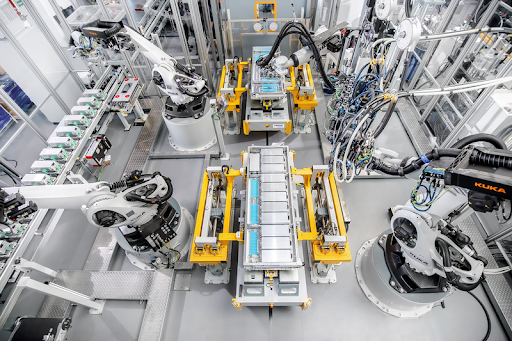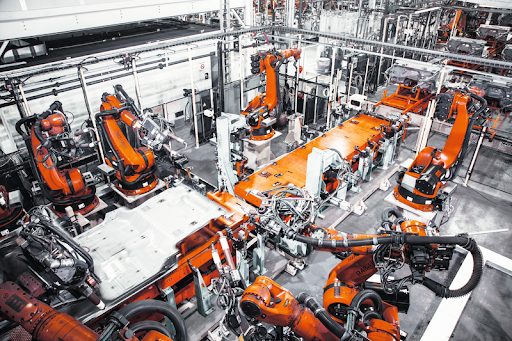Introduction to Machine Vision
Machine vision, a subset of artificial intelligence (AI) technology, empowers machines with the ability to perceive and interpret visual information. In the realm of robotics and automation, machine vision plays a crucial role in enhancing the capabilities and efficiency of robotic systems.
Understanding Robotics and Automation
Robotics involves the design, construction, operation, and use of robots to perform tasks autonomously or semi-autonomously. Automation refers to the use of technology to perform tasks with minimal human intervention. Together, robotics and automation aim to streamline processes, increase productivity, and improve efficiency across various industries.
Integration of Machine Vision in Robotics
Machine vision is seamlessly integrated into robotics to provide robots with vision capabilities similar to human eyesight. By equipping robots with cameras and sophisticated image processing algorithms, machine vision enables robots to perceive and understand their environment, identify objects, navigate obstacles, and perform complex tasks with precision.
Applications of Machine Vision in Automation
The applications of machine vision in automation are diverse and encompass various industries:
- Manufacturing: In manufacturing, machine vision guides robotic arms in assembling products, inspects quality, and detects defects on the production line.
- Logistics: In logistics and warehousing, machine vision helps robots in sorting, picking, and packing items with speed and accuracy.
- Healthcare: In healthcare, machine vision assists in surgical procedures, medical imaging, and patient care tasks.
- Agriculture: In agriculture, machine vision enables robots to identify and harvest crops, monitor plant health, and optimize resource usage.
Benefits of Machine Vision in Robotics and Automation
- Increased Efficiency: Machine vision enhances the speed and accuracy of robotic tasks, leading to improved productivity and reduced operational costs.
- Quality Assurance: By detecting defects and anomalies, machine vision ensures that products meet quality standards, reducing waste and enhancing customer satisfaction.
- Safety: Machine vision-equipped robots can operate safely alongside humans, minimizing the risk of accidents and injuries in the workplace.
- Adaptability: Machine vision enables robots to adapt to changing environments and tasks, making them versatile and suitable for a wide range of applications.
Challenges and Limitations
While machine vision offers numerous benefits, it also presents challenges:
- Complexity: Implementing and integrating machine vision systems into robotic platforms can be complex and require specialized expertise.
- Environmental Factors: Lighting conditions, surface variations, and other environmental factors can affect the performance of machine vision systems, requiring careful calibration and optimization.
Future Trends in Machine Vision and Automation
The future of machine vision in robotics and automation is promising, with ongoing advancements in AI, sensor technology, and robotics:
- Artificial Intelligence: Advancements in AI algorithms enable machine vision systems to learn and adapt to new environments and tasks autonomously.
- Sensor Fusion: Integration of multiple sensors, such as cameras, LiDAR, and radar, enhances the perception capabilities of robots in diverse environments.
- Collaborative Robotics: Collaborative robots, or cobots, equipped with machine vision capabilities, will play a significant role in human-robot collaboration and flexible manufacturing.
Conclusion
In conclusion, machine vision technology is a game-changer in the field of robotics and automation, providing robots with the ability to see, interpret, and interact with their surroundings effectively. With its potential to increase efficiency, ensure quality, and enhance safety, machine vision is poised to drive innovation and transformation across industries in the years to come.
FAQs
-
How does machine vision enhance robotic efficiency? Machine vision enables robots to perceive and understand their environment, allowing them to perform tasks with speed and accuracy.
-
What are some common applications of machine vision in automation? Machine vision is used in manufacturing, logistics, healthcare, agriculture, and various other industries for tasks such as quality inspection, sorting, and medical imaging.
-
What are the challenges associated with implementing machine vision in robotics? Challenges include complexity in integration, environmental factors affecting performance, and the need for specialized expertise.
-
What are the benefits of using machine vision in robotics and automation? Benefits include increased efficiency, quality assurance, safety, and adaptability to changing environments and tasks.
-
What are some future trends in machine vision and automation? Future trends include advancements in AI, sensor fusion, and collaborative robotics, driving innovation and transformation in the field.
- https://deltasigmacompany.com/

